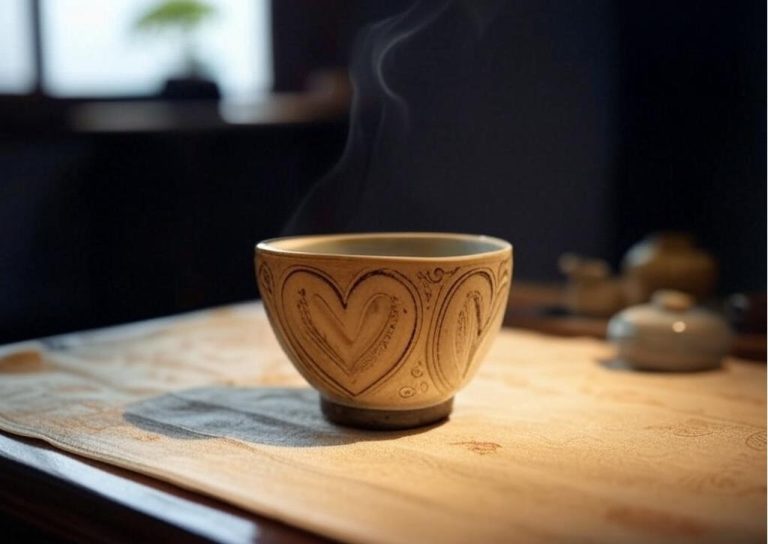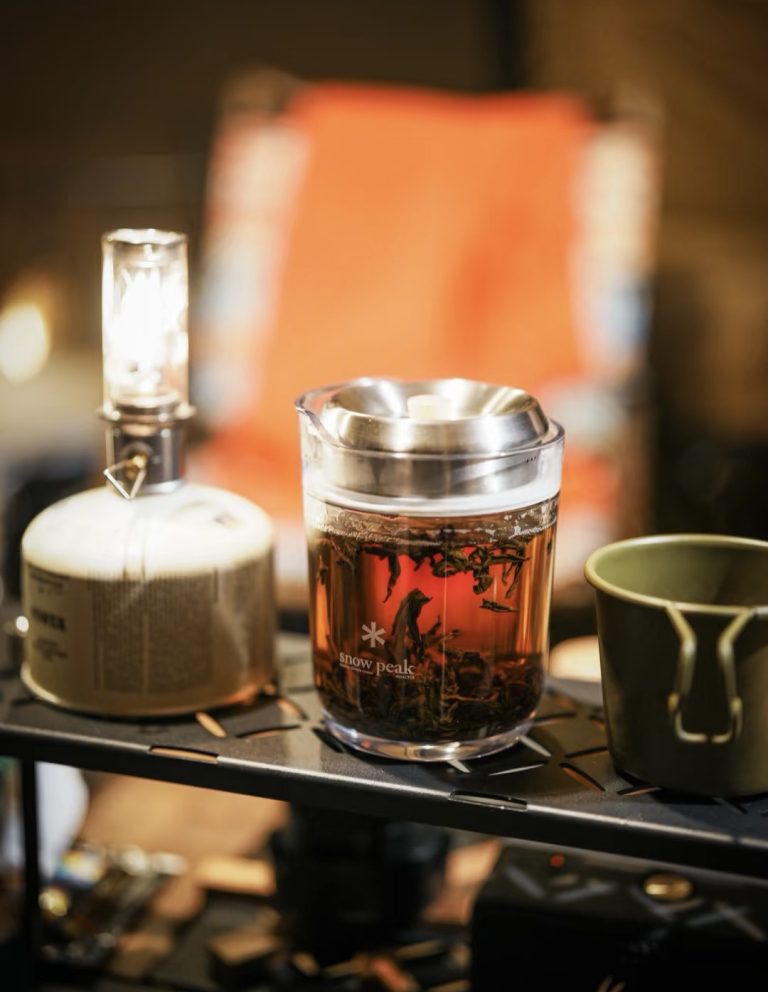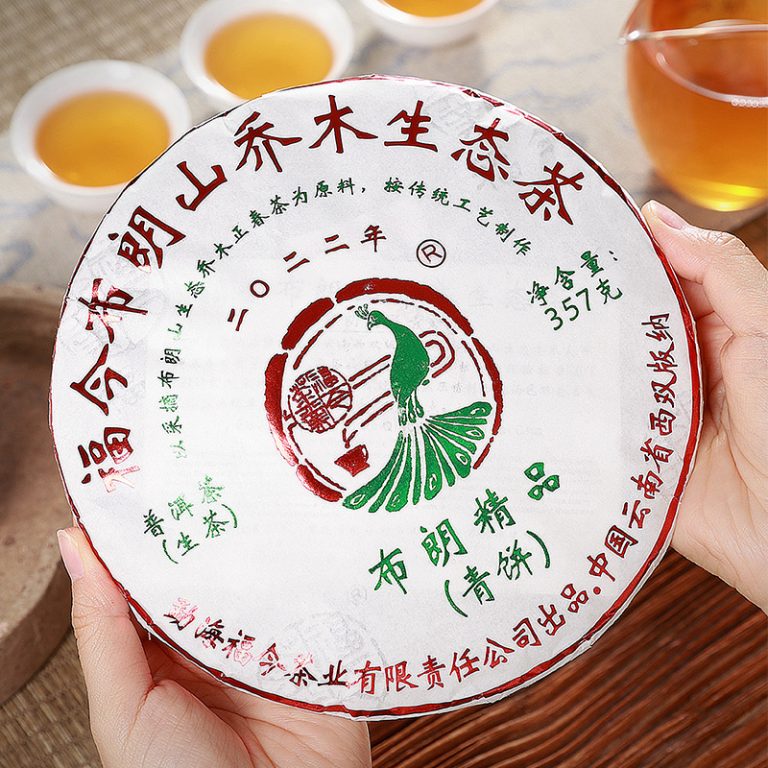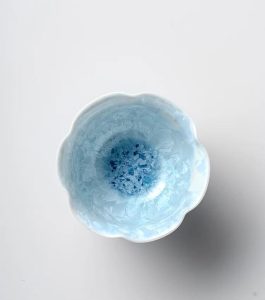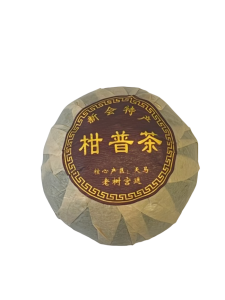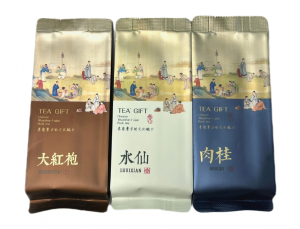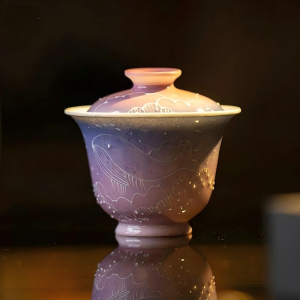
The Ancient Tea Trees of Jingmai Mountain
High atop Jingmai Mountain, local tea farmers uphold time-honored agricultural traditions, crafting premium teas that have captured global admiration like never before. In a high-altitude forest, the first rays of dawn cloak the verdant peaks, illuminating an ancient tea tree basking in warm sunlight. With a sturdy trunk stretching 1.4 meters in diameter and sprawling branches forming a luxuriant canopy, this tree stands in majestic contrast to the tightly packed, low-lying tea bushes typical of commercial plantations across China. Nestled deep in the mountains of southwestern Yunnan Province, this tea tree is extraordinary—not just in its form, but in its purpose.
For the family of 41-year-old Yan Rong and 36-year-old Ke Lanfang, joined by their elderly parents, this tree is sacred. Gathered before it, they chant prayers in the Bulang language—a tongue spoken by the region’s ethnic communities. Jingmai Mountain nurtures five tea forests that together form the oldest and most expansive ancient tea groves on Earth. To an outsider, it might blend into the woodland scenery, but to this family, it is the revered Tea Soul Tree. They pray to their ancestor Pa Ai Leng, now venerated as the Tea Ancestor, seeking blessings for a plentiful harvest. “This tree is a thousand years old,” Yan Rong declares with pride, gesturing to its massive trunk. Yet, in recent years, their faith—and their livelihood—has faced mounting tests as nature’s unpredictable challenges intensify amid rising fame and prices for Jingmai’s specialty teas.
The Global Love for Tea and Jingmai’s Unique Legacy

Tea ranks as the world’s second most popular beverage, trailing only water. Each year, people worldwide consume roughly 170 billion liters of tea—green, black, oolong, and more. Though processing methods vary, all teas stem from a single source: the Camellia sinensis plant, an evergreen species whose cultivation spread globally, most famously when British colonizers introduced it to India in the early 19th century, shifting China’s tea market dominance. Yet, one tea remains inextricably tied to Jingmai Mountain.
For over a millennium, the Bulang and Dai ethnic groups have safeguarded these ancient large-leaf tea forests, a subspecies yielding diverse teas, including the richly hued, full-bodied Pu’er tea of Jingmai. Celebrated for its layered flavors, Pu’er is dubbed a “drinkable antique” by connoisseurs, often aged for a decade or more to deepen its smoothness and value. In China’s growing tea market, Pu’er—infused with the essence of primal forests and delicate floral notes—is likened to fine wine: the longer it matures, the richer and more collectible it becomes.
Sustainable Tea Cultivation and Economic Impact
The Yan Rong family tends a plot of about 4,000 tea trees, but for years, their profits were slim. In 2015, they partnered with a luxury brand specializing in top-tier Pu’er tea. Today, their agricultural cooperative employs local workers to process tea from 37 households, yielding around one ton annually. The tea is pressed into round cakes, aged, packaged, and sold for 2,388 yuan per 357-gram cake. Compared to two decades ago, Jingmai residents’ per capita income has soared. For Yan Rong and Ke Lanfang, this success translates to an annual income of 200,000 to 300,000 yuan—surpassing the average household earnings in nearby Huimin Town.
Two years ago, UNESCO designated Jingmai Mountain as a World Cultural Heritage site, the only such site globally tied to tea cultivation. Since the heritage proposal emerged over a decade ago, Jingmai tea prices have roughly doubled. The region’s 6,000 residents steward 1,580 hectares of land and over a million tea trees, following nature’s rhythms in a sustainable model that now faces climate change threats.
Challenges and Resilience: Climate Change and Tradition
In spring 2024, Jingmai endured its worst drought in 60 years, compounded by an unusually warm winter that triggered a sudden pest outbreak, endangering the precious tea leaves atop the mountain forests the Yan Rong family depends on. The Bulang tea ancestor, Pa Ai Leng, was a real figure. Oral history recounts that around the 10th century, he led his people to settle in Jingmai, uncovering the medicinal properties of wild tea trees and domesticating them. In his final teachings, he said: “Leave you cattle and horses, fearing they might die of illness; leave you gold and silver, fearing you might squander them; leave you these tea trees, and your descendants will have an endless supply.” These words echo through generations of tea farmers like Yan Rong and Ke Lanfang.
Unlike the terraced monoculture tea gardens prevalent worldwide, Jingmai’s carefully managed land reflects profound wisdom. The canopy shades the shade-loving tea trees, while ferns and herbs beneath foster a thriving ecosystem, retaining soil moisture. Forests cleverly separate tea zones, curbing pest and disease spread. The Bulang people, believing all things possess a spirit, shun pesticides, herbicides, and aggressive pruning. Ke Lanfang trims the grass between trees just twice yearly, using only a knife.
Recent studies affirm the efficacy of Jingmai’s agroforestry. Research from the University for Nationalities reveals that high-altitude Jingmai teas are less bitter than their low-altitude counterparts, while sustainable practices yield richer biodiversity than commercial plantations. Today, Jingmai tea fetches prices 6.5 times higher than ordinary plantation teas.
Cultural Heritage and Modern Transformation

Despite owning thousands of ancient trees, Yan Rong grew up in poverty as demand for their tea lagged. In the late 20th century, China prioritized high-yield terraced tea gardens, sidelining labor-intensive ancient tree teas. While some Yunnan tea farmers razed ancient forests for higher-yielding varieties, Jingmai’s people preserved their heritage. Around 2000, government investment in rural roads and electricity sparked change. Tea merchants arrived, bringing opportunities—and challenges. Some villagers felled trees for guesthouses or pruned ancient trees for profit.
By 2003, Su Guowen, a retired teacher claiming descent from Pa Ai Leng, rallied the community. Quoting the ancestor’s call to “protect the forest as you would your eyes,” he championed tradition for long-term gain. Village leader Yan Sanyong urged Dai residents to maintain their ecological balance, banning deforestation and chemicals. By 2010, elders partnered with the government for the UNESCO bid. Checkpoints now guard against invasive species, stone roads preserve tea aromas, and construction limits protect the region.
Associate Professor Zuo Jing from Anhui University documented this heritage, renovating four homes into eco-friendly models blending modern sanitation and heating with ancient architecture. “Jingmai Mountain is like an ancient tea tree,” he said, “with a unique history, a vibrant present, and ongoing growth.”
The Art of Tea: Harvest and Processing
During the family’s prayer ritual, Yan Rong and Ke Lanfang join the spring harvest—a meticulous tradition. Bulang, Dai, and other ethnic members, in light shoes with large baskets, navigate rugged terrain, hand-picking tender buds to preserve quality. At home, they wilt the leaves, steam them to halt decomposition, stir-fry them to prevent oxidation, roll them by hand to release flavors, and dry them for pressing and aging. The resulting raw Pu’er tea matures over a decade for peak flavor.
The 2024 drought hit hard, but labor-intensive efforts curbed losses. During the pest outbreak, Yan Rong, Ke Lanfang, and others manually removed insects, proving the ancestral method of separation forests effective.
A Thriving Future Rooted in Tradition
Today, the couple hosts tea ceremonies for buyers in their renovated wooden home, reflecting Jingmai’s booming tea market—90% of the region’s income. The younger generation livestreams tastings, while villages like Wengji and Nuogang transform wooden homes into shops and build warehouses for aging tea cakes, seen as future antiques. Last May, a rare Yunnan tea cake sold for HKD 3.5 million at auction.
Amid persistent drought, tea farmers lean on tradition—Bulang elders divine weather with chicken bones, Dai villagers pray to Buddha. In May, rain finally drenched the land, sustaining Jingmai Mountain as a testament to ancestral wisdom and nature’s resilience.
Some information in this article is reprinted from National Geographic Magazine.

